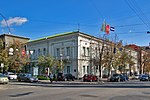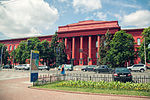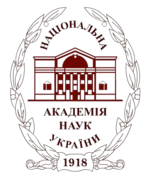Khanenko Museum

The Khanenko Museum (official name: The Bohdan and Varvara Khanenko National Museum of Arts) is an art museum located in Kyiv, in Ukraine, which holds the biggest and most valuable collections of European, Asian and Ancient art in the country. The museum was established in 1919 according to the will of art collector Bohdan Khanenko (1917) and the deed of gift to the Ukrainian Academy of Sciences signed by his wife Varvara in 1918. The art collection of Bohdan and Varvara Khanenko, distinguished Ukrainian collectors and philanthropists of the late 19th and the early 20th century, is the core of the museum's holdings. The museum comprises two late 19th-century buildings of great historical and artistic value located on Tereshchenkivska Street. The Khanenkos' mansion houses the permanent exhibition of European fine and decorative arts from the 14th through the 18th century. A group of unique early Byzantine "Sinai" icons created in the 6th and the 7th century has been on display in a separate room of the building since 2004. On the first floor of the mansion is the permanent exhibition of Ancient art. The other museum building located nearby was the property of the Sakhnovskys, the Khanenkos' close relatives, until 1919. Since 2006, it has housed the permanent exhibition of Asian art. The four rooms are dedicated to the art of Buddhism and Islam as well as that of China and Japan. The Khanenko Museum's collection includes original artworks by outstanding European masters, such as Pieter Paul Rubens, Gentile Bellini, Juan de Zurbarán, Jacques-Louis David, François Boucher. The museum holds highly valuable collections of European sculpture and decorative art, beautiful and rare pieces of Iranian, Tibetan, Chinese and Japanese fine and decorative art, as well as small but worthwhile collections of Ancient Greek, Roman and Egyptian art. In total, the Khanenko Museum's holdings comprise more than 25 000 items. Almost 1000 selected artworks are displayed permanently.
Excerpt from the Wikipedia article Khanenko Museum (License: CC BY-SA 3.0, Authors, Images).Khanenko Museum
Tereshchenkivska Street, Kyiv Центр
Geographical coordinates (GPS) Address External links Nearby Places Show on map
Geographical coordinates (GPS)
| Latitude | Longitude |
|---|---|
| N 50.441111111111 ° | E 30.514444444444 ° |
Address
Музей мистецтв ім. Ханенків
Tereshchenkivska Street 15
01004 Kyiv, Центр
Ukraine
Open on Google Maps










